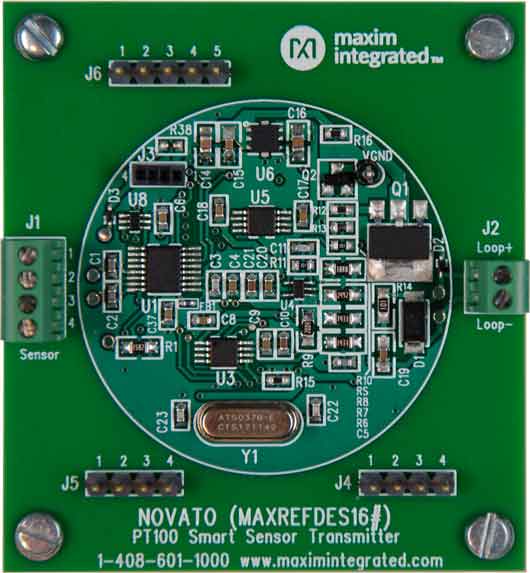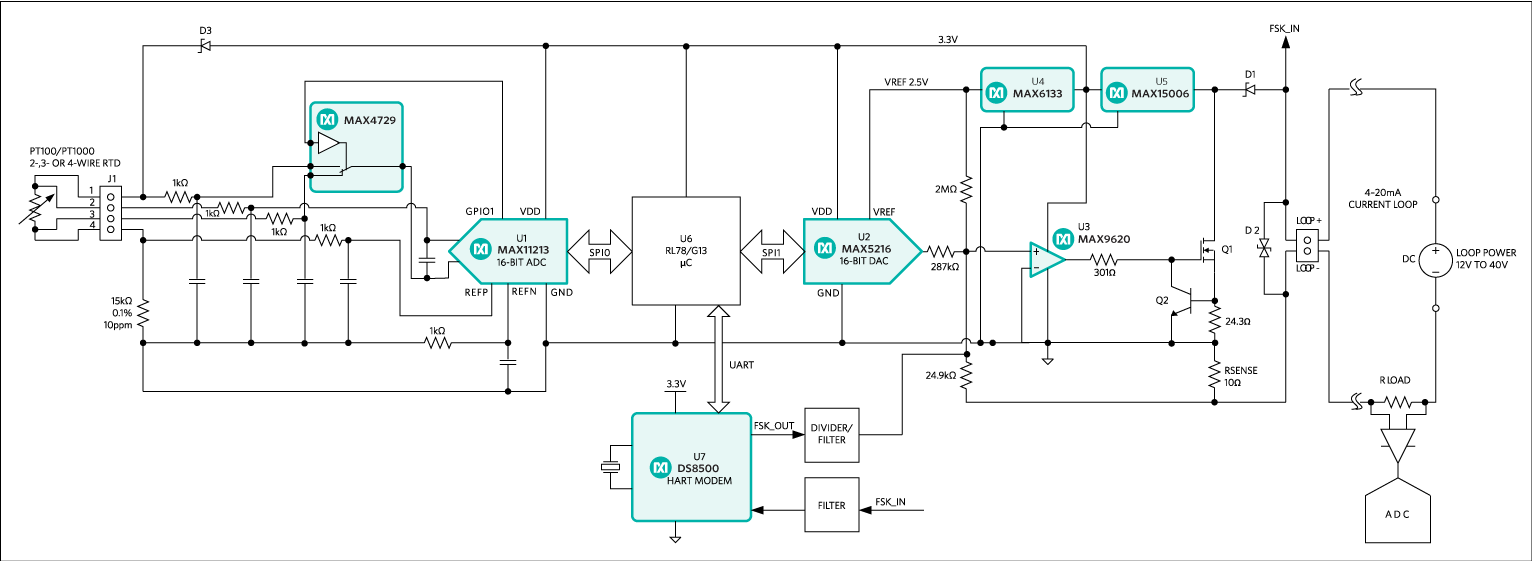
Save time and deliver your solutions faster with ADI’s new suite of precision technology signal chains. Align your applications ranging from Smart Industry to Instrumentation, Electrification to Digital Health, to exactly the right precision technology combinations.
Tailor your signal chain with confidenceMAX6133
PRODUCTION3ppm/°C, Low-Power, Low-Dropout Voltage Reference
Low-Power, Low-Dropout Voltage Reference has 3ppm/°C Drift and Fits in Tiny µMAX® Package
- Part Models
- 18
- 1ku List Price
- Starting From $4.97
Part Details
- Low Temperature Coefficient
- 3ppm/°C (max), SO
- 5ppm/°C (max), µMAX
- Tiny 5mm x 3mm µMAX Package
- Low 200mV (max) Dropout Voltage
- Low 40µA Quiescent Current
- ±0.04% (max) Initial Accuracy
- Low 16µVP-P Noise (0.1Hz to 10Hz) (2.5V Output)
- 15mA Output Source-Current Capability
- Wide 2.7V to 12.6V Supply Voltage
- Excellent Line (30µV/V, max) and Load (0.05mV/mA, max) Regulation
The MAX6133 high-precision, low-power, low-dropout voltage reference features a low 3ppm/°C (max) temperature coefficient and a low dropout voltage (200mV, max). This series-mode device features bandgap technology for low-noise performance and excellent accuracy. Load regulation specifications are guaranteed for source currents up to 15mA. The laser-trimmed, high-stability thin-film resistors, together with post-package trimming, guarantee an excellent initial accuracy specification (0.04%, max). The MAX6133 is a series voltage reference and consumes only 40µA of supply current (virtually independent of supply voltage). Series-mode references save system power and use minimal external components compared to 2-terminal shunt references.
The MAX6133 is available in 8-pin µMAX and SO packages. The unique blend of tiny packaging and excellent precision performance make these parts ideally suited for portable and communication applications.
Applications
- A/D and D/A Converters
- Handheld Instruments (PDAs, Palmtops)
- High-Accuracy Industrial and Process Control
- Power Supplies
- Precision Regulators
Documentation
Data Sheet 1
Reliability Data 1
Design Note 1
Technical Articles 3
ADI has always placed the highest emphasis on delivering products that meet the maximum levels of quality and reliability. We achieve this by incorporating quality and reliability checks in every scope of product and process design, and in the manufacturing process as well. "Zero defects" for shipped products is always our goal. View our quality and reliability program and certifications for more information.
| Part Model | Pin/Package Drawing | Documentation | CAD Symbols, Footprints, and 3D Models |
|---|---|---|---|
| MAX6133A25+ | Micro-MAX, Thin Shrink Small-Outline | ||
| MAX6133A25+T | Micro-MAX, Thin Shrink Small-Outline | ||
| MAX6133A30+ | Micro-MAX, Thin Shrink Small-Outline | ||
| MAX6133A30+T | Micro-MAX, Thin Shrink Small-Outline | ||
| MAX6133A41+ | Micro-MAX, Thin Shrink Small-Outline | ||
| MAX6133A50+ | Micro-MAX, Thin Shrink Small-Outline | ||
| MAX6133AASA25+ | Small-Outline IC, Narrow (0.15in) | ||
| MAX6133AASA25+T | Small-Outline IC, Narrow (0.15in) | ||
| MAX6133AASA30+ | Small-Outline IC, Narrow (0.15in) | ||
| MAX6133AASA30+T | Small-Outline IC, Narrow (0.15in) | ||
| MAX6133AASA41+ | Small-Outline IC, Narrow (0.15in) | ||
| MAX6133AASA41+T | Small-Outline IC, Narrow (0.15in) | ||
| MAX6133AASA50+ | Small-Outline IC, Narrow (0.15in) | ||
| MAX6133AASA50+T | Small-Outline IC, Narrow (0.15in) | ||
| MAX6133BASA25+ | Small-Outline IC, Narrow (0.15in) | ||
| MAX6133BASA25+T | Small-Outline IC, Narrow (0.15in) | ||
| MAX6133BASA41+ | Small-Outline IC, Narrow (0.15in) | ||
| MAX6133BASA41+T | Small-Outline IC, Narrow (0.15in) |
| Part Models | Product Lifecycle | PCN |
|---|---|---|
| No Match Found | ||
|
Sep 19, 2018 - 1753N ASSEMBLY |
||
| MAX6133A25+ | PRODUCTION | |
| MAX6133A25+T | PRODUCTION | |
| MAX6133A41+ | PRODUCTION | |
|
Oct 30, 2020 - 1702R2 ASSEMBLY |
||
| MAX6133AASA25+ | PRODUCTION | |
| MAX6133AASA25+T | PRODUCTION | |
| MAX6133AASA30+ | PRODUCTION | |
| MAX6133AASA30+T | PRODUCTION | |
| MAX6133AASA50+ | PRODUCTION | |
| MAX6133AASA50+T | PRODUCTION | |
| MAX6133BASA25+ | PRODUCTION | |
| MAX6133BASA25+T | PRODUCTION | |
| MAX6133BASA41+ | PRODUCTION | |
| MAX6133BASA41+T | PRODUCTION | |
|
May 22, 2018 - 1702N ASSEMBLY |
||
| MAX6133AASA41+ | PRODUCTION | |
| MAX6133AASA50+ | PRODUCTION | |
This is the most up-to-date revision of the Data Sheet.
Hardware Ecosystem
Tools & Simulations
LTpowerCAD
Design tools for the following parts are available in LTpowerCAD:
Software Development 1
Reference Designs
Latest Discussions
No discussions on MAX6133 yet. Have something to say?
Start a Discussion on EngineerZone®


